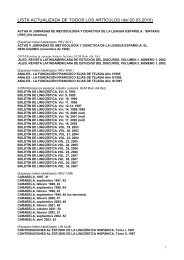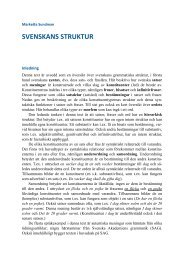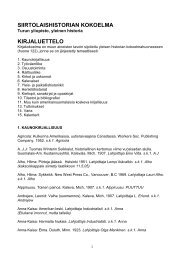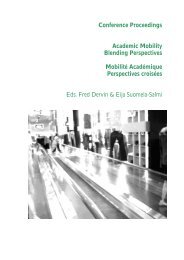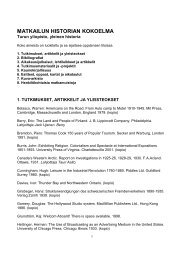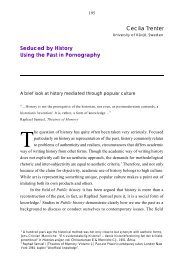Style sheet (pdf)
Style sheet (pdf)
Style sheet (pdf)
You also want an ePaper? Increase the reach of your titles
YUMPU automatically turns print PDFs into web optimized ePapers that Google loves.
5 Quotations and References in the Text<br />
The Golden Rule: Give Credit to Whom Credit is Due.<br />
5.1 When to do it?<br />
Data: When you are analysing or discussing primary data, always indicate the<br />
source. This includes data you have collected yourself.<br />
Research: When you make use of any work by other people, you must always<br />
indicate the source of the information; this also includes personal correspondence or<br />
conversations. Within the text, this usually means the surname of the author(s), the<br />
year of publication and the page number (see Section 5.2).<br />
There are three correct ways of making use of other people‟s studies: quotation,<br />
paraphrase and summary. Anything else is plagiarism or theft, which are illegal.<br />
5.2 Quotations<br />
All references must be provided in the running text and not in footnotes or endnotes.<br />
You may quote if you need to use the exact words of the original. For instance,<br />
this may be because the material is unique and memorable or because the original<br />
statement is well-written and more compelling than a summary or paraphrase of it<br />
would be. A quotation must match the original exactly. Even errors, such as<br />
misprints, must be reproduced; to show that the error is in the original, use [sic]<br />
after the relevant point.<br />
Below, there is a sample of an original text by Schlant. Several examples in this<br />
section will draw from it:<br />
Historians, political scientists, economists, and journalists are constrained (or ought to be)<br />
by facts, and other objective criteria, whereas literature projects the play of information,<br />
exposing levels of conscience and consciousness that are part of a culture‟s unstated<br />
assumptions and frequently unacknowledged elsewhere. Because they are unconsciously<br />
held, these assumptions provide greater insight into the moral positions at work than do its<br />
explicit opinions and images, which are often censored or the expression of wishful<br />
thinking. Literature lays bare a people‟s dreams and nightmares, its hopes and<br />
apprehensions, its moral positions and its failures. It reveals even where it is silent; its<br />
blind spots and absences speak a language stripped of conscious agendas.<br />
(Schlant 1999: 3)<br />
Every change, however trivial, should be indicated. You do so by using square<br />
brackets, as in the example below:<br />
Schlant claims that “[l]iterature [...] reveals even where it is silent; its blind spots<br />
and absences speak a language stripped of conscious agendas” (1999: 3).<br />
4




